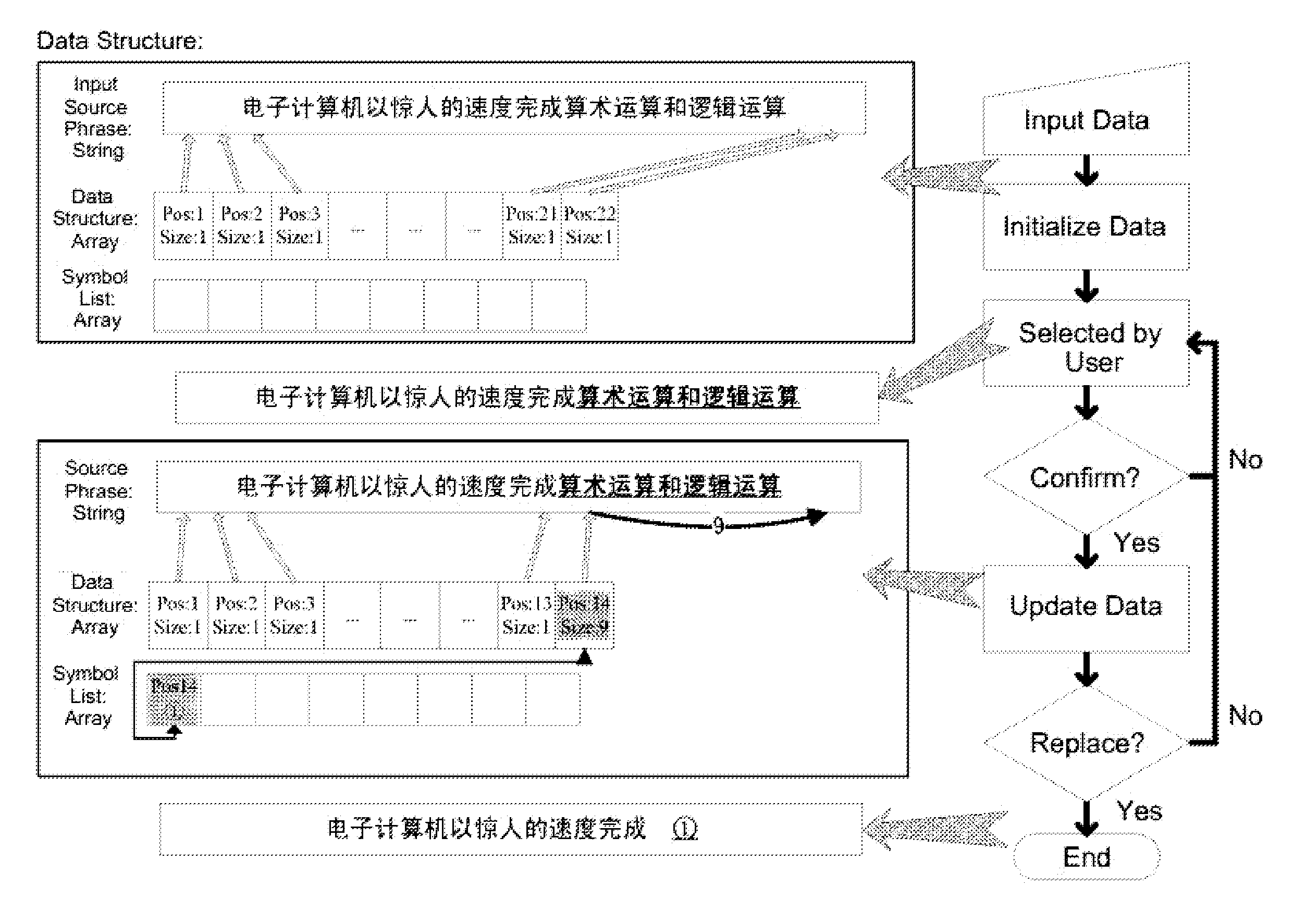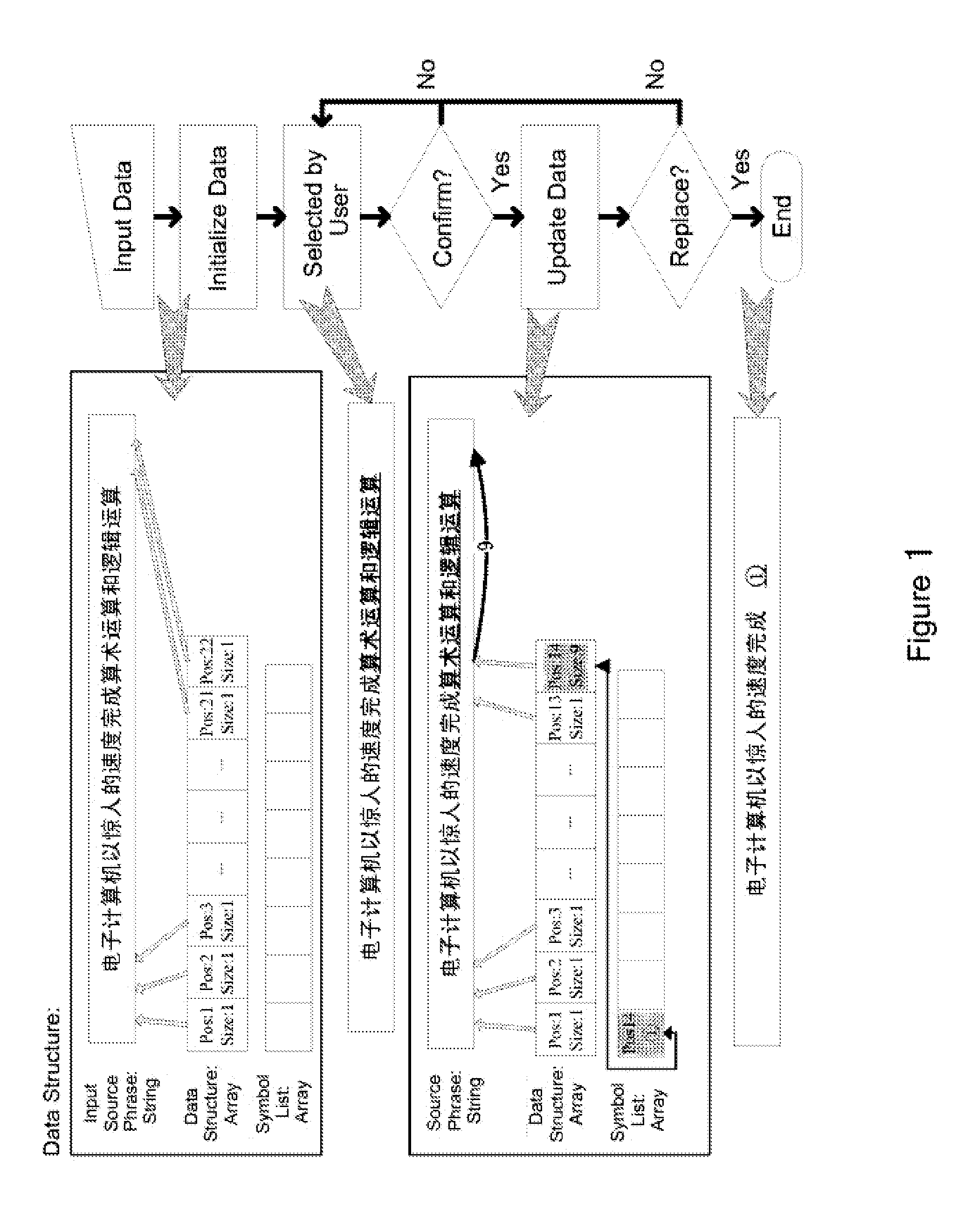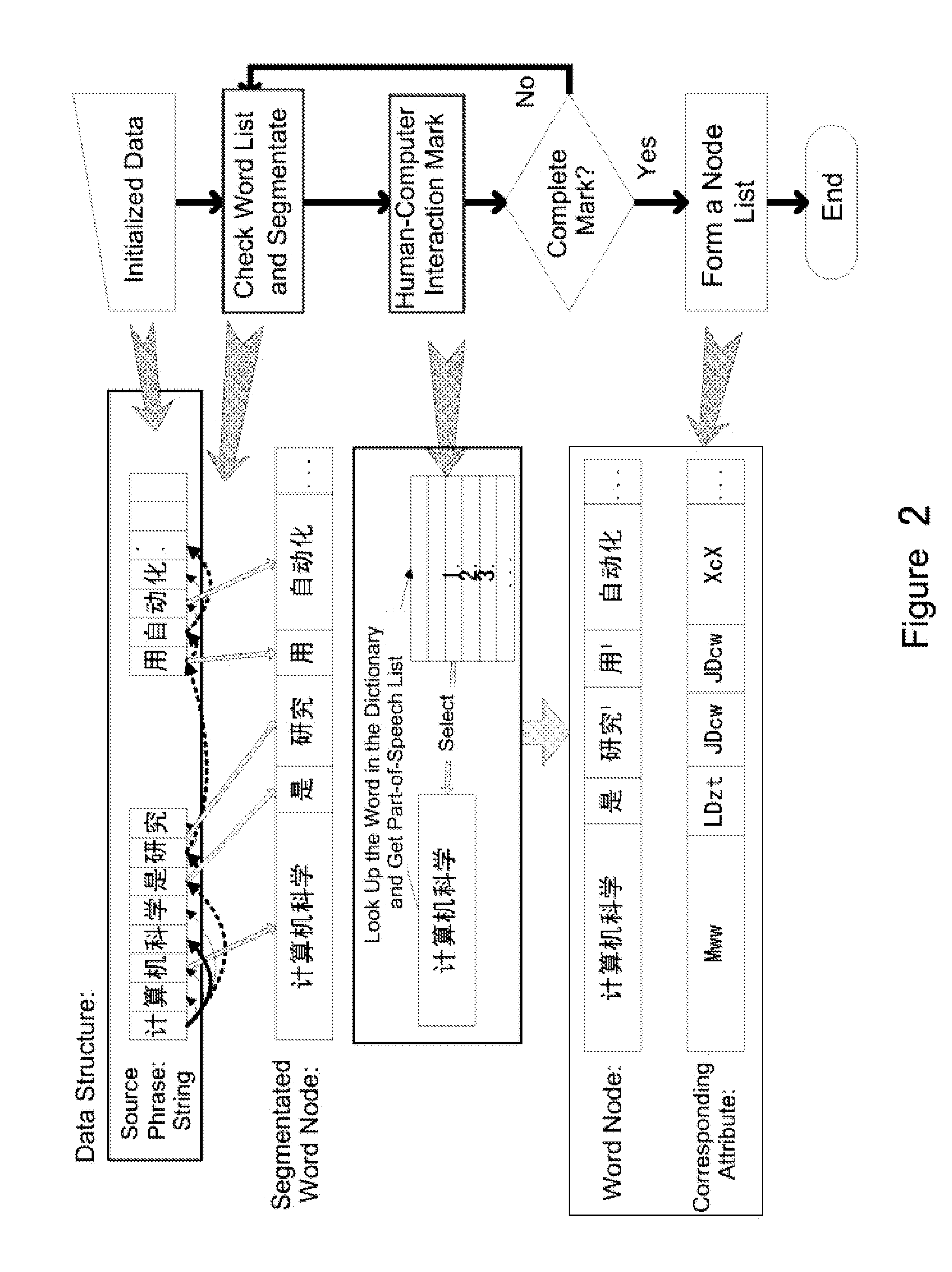Machine translation method and system
a machine translation and machine translation technology, applied in the field of machine translation and a system of machine translation, can solve the problems of inability to completely correct translation, no existing machine translation method makes a substantial breakthrough in translation quality, and cannot be used in formalizing a non-formal natural language. achieve the effect of achieving translation quality
- Summary
- Abstract
- Description
- Claims
- Application Information
AI Technical Summary
Benefits of technology
Problems solved by technology
Method used
Image
Examples
Embodiment Construction
[0046]Hereafter, the preferred embodiments will be described in reference to the accompanying drawings.
The First Preferred Embodiment of the Method of Machine Translation
[0047]This preferred embodiment is a method of machine translation for translating a non-formal source language into a formal target language, comprising the steps of: (a) formalizing a non-formal source language in an interactive way by first identifying one by one the fixed language segments of an initial language segment of a non-formal source language and tagging the fixed language segments with meaning marks until the last fixed language segment and then composing level by level the non-fixed language segments of the initial language segment and tagging the non-fixed language segments with key component marks and relation marks until the non-fixed language segment constituted by the whole initial language segment; (b) transforming the formal source language into a formal target language in an automatic way by t...
PUM
 Login to View More
Login to View More Abstract
Description
Claims
Application Information
 Login to View More
Login to View More - R&D
- Intellectual Property
- Life Sciences
- Materials
- Tech Scout
- Unparalleled Data Quality
- Higher Quality Content
- 60% Fewer Hallucinations
Browse by: Latest US Patents, China's latest patents, Technical Efficacy Thesaurus, Application Domain, Technology Topic, Popular Technical Reports.
© 2025 PatSnap. All rights reserved.Legal|Privacy policy|Modern Slavery Act Transparency Statement|Sitemap|About US| Contact US: help@patsnap.com



